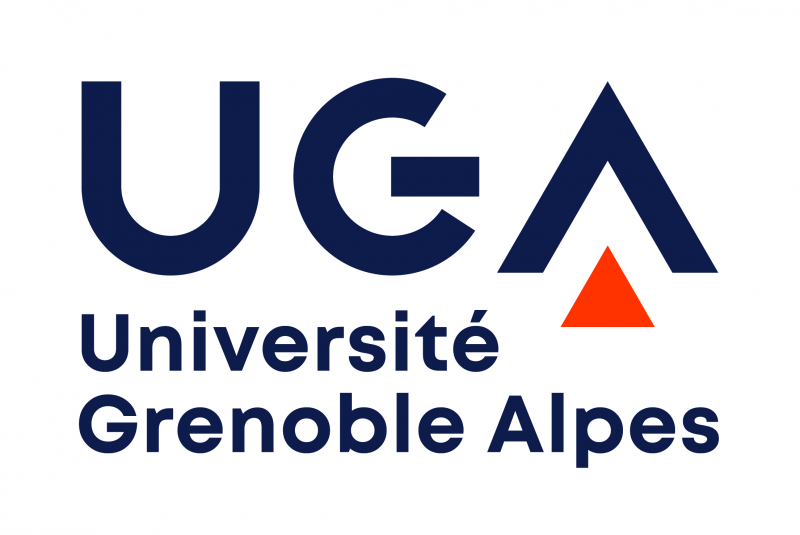INRIA Grenoble Rhône-Alpes
| INRIA Grenoble Rhône-Alpes |
 |
|
| Lab home-page : http://www.inria.fr/centres-de-recherche-inria/grenoble-rhone-alpes | ||
| Activity reports : Teams activity reports from 2005 to 2009 | ||
| AERES evaluation report : Report May 2010 (pdf, 231,64 ko) | ||
| Publications'URLs : To access INRIA's scientific production, see http://hal.inria.fr/INRIA | ||
| Embedded systems, formal methods, security, privacy, model-checking, program verification, circuit verification, component-based design, theorem proving, distributed computing, grid computing, middleware, performance evaluation, game theory, scheduling, fault-tolerance, autonomic systems, computer vision, motion capture, image synthesis, augmented and virtual reality, robotics, motion planning, Bayesian inference, statistics, non-linear optimization, non-smooth mechanics, networked control systems. | ||
| Themes |
Mastering dynamic and heterogeneous resources. Modeling and simulating multi-scale and multi-components systems. Perceiving and interacting with real and virtual environments. |
|
| Highlights and distinctions | Marie-Paule Cani | Member of the Institut Universitaire de France; Irène Joliot Curie Award; Eurographics Outstanding Technical Contributions Award. |
| François Sillion | Eurographics Outstanding Technical Contributions Award. | |
| Hubert Garavel | Gay-Lussac Humboldt Research Award. | |
| AERES assessment | A+ "Le Centre INRIA de Grenoble Rhône-Alpes a mené sur la période 2005-2009 une activité remarquable à tous égards, qu'il s'agisse de sa production scientifique, de la valorisation industrielle, de la gestion de la croissance des personnels et de l'activité, ou de son rayonnement au sein des établissements partenaires d'enseignement supérieur et de recherche grenoblois et lyonnais." | |
| Faculty | 189 | |
| Researchers | 99 | |
| Habilitation | 52 | |
| "Produisants AERES" | 95% | |
| PhD students | 215 | |
| Publications (average per year) | Journals : 150 | |
| Conferences : 300 | ||
|
Funding K€ Mean value per year |
7 368 | |
The INRIA Grenoble Rhône-Alpes research center consists of 34 research teams, most of them shred with a university lab. The research focus of these teams includes the following topics:
- Mastering dynamic and heterogeneous resources, from embedded systems to large scale computing infrastructures. This encompasses the design of reliable and robust embedded software (including programming languages, formal verification, static analyzes, ...), high-performance computing (both on computing grids and on desktop grids), and ubiquitous sensor networks (with stringent power consumption constraints).
- Modeling and simulating multi-scale and multi-components systems: reproducing complex and natural phenomena or phenomena resulting from technological developments in order to understand, predict, control, and optimize them.
- Perceiving and interacting with real and virtual environments: prolonging or improving people's sensory, motor, and cognitive skills in their actual or virtual field of action, locally or remotely. This encompasses virtual interaction for communications or digital entertainment, virtual prototyping for the automotive industry, assisting people with limited independence, and driving aids to improve road safety.
Among the numerous software developed at INRIA Grenoble Rhône-Alpes, 9 have an international audience and are widely used, both in industry and in academia: Amaya, Bigimbaz2, Bof, CADP, Diet, Fractal, GNA, GVTR, and Siconos, several of them being linked to a patent (10 patents are currently generating royalties). Since 2006, 8 start-ups have been directly created from the research teams. Major industrial collaborations exist with ST Microelectronics, Alcatel Lucent, Bull, EDF, Xerox, L'Oreal, Thales, Microsoft, Renault, Toyota, ... We also belong to the Nanosciences foundation and to the Minalogic competitivity cluster, with close to 10 labeled projects. Finally, INRIA Grenoble Rhône-Alpes faculty staff belong to the editorial board of 45 international journals (ACM Trans. on Embedded Computing Systems, ACM Trans. on Graphics, Automatica, IEEE Trans. on Parallel and Distributed Systems, IEEE Trans. on Pattern Analysis and Machine Intelligence, J. of Symbolic Computation, Parallel Computing, J. of Universal Computer Science, to name just a few of them), and have chaired more than 30 international conferences over the past 4 years.


 Sign in
Sign in














